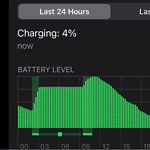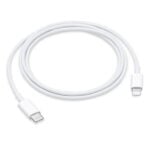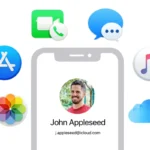Connecting your iPhone to iTunes should be straightforward, but sometimes it doesn’t go as planned. When your iPhone isn’t showing up in iTunes, it can be frustrating. The most common causes are outdated software, faulty cables, or driver issues.
Don’t worry – there are several quick fixes you can try. First, check your USB cable and ports. A damaged cable or dirty port can prevent your iPhone from connecting. Next, make sure both your iPhone and iTunes are up to date. Outdated software often leads to compatibility problems.
If those steps don’t work, try restarting both your iPhone and computer. This can resolve many connection issues. You may also need to update your device drivers or reinstall iTunes. Let’s explore these solutions in more detail.
| Common Issues | Quick Fixes |
|---|---|
| Outdated software | Update iTunes and iOS |
| Faulty cable | Try a different USB cable |
| Driver problems | Update or reinstall drivers |
| Connection error | Restart devices |
iPhone Not Showing Up in iTunes: How to Fix It
If you connect your iPhone to your computer but it doesn’t appear in iTunes, it can be frustrating—especially when you want to sync, back up, or update your device. This is a common issue on both Windows and Mac computers and can be caused by several factors.
Common Causes
- Faulty or incompatible USB cable
- Outdated or corrupted Apple Mobile Device drivers (Windows)
- Outdated iTunes version
- Trust issues between iPhone and computer
- Software glitches on iPhone or computer
- USB port or hardware issues
Step-by-Step Fixes
1. Check Your USB Connection
- Use an original or Apple-certified USB cable.
- Try a different USB port on your computer.
- Avoid USB hubs; connect directly to the computer.
- Inspect the cable and ports for damage or debris.
2. Update iTunes
- On Windows: Open iTunes > Help > Check for Updates.
- On Mac: Update macOS via System Preferences > Software Update (iTunes updates come with macOS).
- Make sure you have the latest version installed.
3. Trust This Computer
- When you connect your iPhone, a prompt should appear asking if you trust this computer.
- Make sure to tap Trust on your iPhone.
- If you missed it, disconnect and reconnect your iPhone to trigger the prompt again.
4. Restart Devices
- Restart your iPhone.
- Restart your computer.
- Reconnect your iPhone after both have restarted.
5. Check Apple Mobile Device Service (Windows)
- Press Windows + R, type
services.msc, and press Enter. - Find Apple Mobile Device Service.
- Right-click and select Restart.
- If the service is not running, right-click and select Start.
6. Reinstall Apple Mobile Device USB Driver (Windows)
- Connect your iPhone.
- Open Device Manager (Windows + X > Device Manager).
- Expand Universal Serial Bus controllers or Portable Devices.
- Find Apple Mobile Device USB Driver.
- Right-click and select Update driver or Uninstall device then reconnect iPhone to reinstall.
7. Reset Location & Privacy Settings on iPhone
- Go to Settings > General > Reset > Reset Location & Privacy.
- This will prompt the trust alert again when you reconnect.
8. Disable Security Software Temporarily
- Sometimes antivirus or firewall software blocks the connection.
- Temporarily disable them and check if iTunes recognizes your iPhone.
9. Use Finder on macOS Catalina and Later
- If you’re on macOS Catalina or newer, iTunes is replaced by Finder for device management.
- Open Finder and check if your iPhone appears under Locations.
Additional Tips
- Try connecting your iPhone to a different computer to isolate the issue.
- Make sure your iPhone is unlocked and on the Home screen when connecting.
- Check for iOS updates on your iPhone (Settings > General > Software Update).
Summary Table
| Problem Cause | Solution |
|---|---|
| Faulty USB cable or port | Use original cable; try different port |
| Outdated iTunes | Update iTunes or macOS |
| Trust prompt not accepted | Tap “Trust” on iPhone |
| Apple Mobile Device Service | Restart or reinstall service (Windows) |
| Software glitches | Restart devices; reset location/privacy |
| Security software blocking | Temporarily disable antivirus/firewall |
Useful Links
- Apple Support: If your computer doesn’t recognize your iPhone or iPad
- How to fix iPhone not showing in iTunes on Windows: TechBout
- iTunes not recognizing iPhone on Windows 10/11: MacObserver
Preliminary Checks Before Troubleshooting
Before diving into complex solutions, it’s crucial to perform some basic checks. These simple steps can often resolve the issue of your iPhone not showing up in iTunes quickly and easily.
Check USB Cable and USB Port
Start by examining your USB cable for any visible damage. Frayed or bent cables can cause connection problems. Try using a different Apple-certified cable to rule out cable issues.
Next, inspect the USB ports on your computer. Dust or debris can interfere with the connection. Clean the ports gently with compressed air.
Try connecting your iPhone to a different USB port. Some ports may not provide enough power. Use the ports directly on your computer rather than a USB hub.
Restart both your iPhone and computer. This can resolve many temporary glitches that prevent device recognition.
Trust This Computer Prompt
When you connect your iPhone to a new computer, a “Trust This Computer” prompt should appear on your device. If you don’t see this prompt:
- Unlock your iPhone
- Go to Settings > General > Reset > Reset Location & Privacy
- Reconnect your iPhone to the computer
This will trigger the trust prompt to reappear. Tap “Trust” when it shows up.
On your computer, ensure iTunes is up to date. Older versions may have compatibility issues with newer iPhones.
| Common Issues | Quick Fixes |
|---|---|
| Damaged cable | Replace with certified cable |
| Dirty USB port | Clean with compressed air |
| Trust prompt not appearing | Reset Location & Privacy settings |
| Outdated iTunes | Update to latest version |
Software and Driver Solutions
When your iPhone doesn’t show up in iTunes, software and driver issues are often to blame. Updating or reinstalling key components can often resolve these problems quickly.
Update iTunes and MacOS or Windows
Keeping your software up-to-date is crucial for proper device recognition. For Mac users, open the App Store and click on the Updates tab. Install any available updates for iTunes and macOS. Windows users should open iTunes and select Help > Check for Updates.
Windows 10 and 11 users should also check for system updates. Go to Settings > Update & Security > Windows Update. Click “Check for updates” and install any that are available. This ensures your system has the latest drivers and fixes.
Apple Mobile Device USB Driver Issues
The Apple Mobile Device USB Driver is essential for Windows to recognize your iPhone. If it’s missing or outdated, your device won’t appear in iTunes. Open Device Manager by right-clicking the Start button and selecting it from the menu.
Look for “Apple Mobile Device USB Driver” under Universal Serial Bus controllers. If you don’t see it, your iPhone may be listed under Other devices. Right-click on the device and select “Update driver”. Choose “Search automatically for updated driver software”.
Reinstall iTunes and Related Components
If updates don’t solve the problem, a clean reinstall of iTunes may be necessary. First, uninstall iTunes and related software components in this order:
- iTunes
- Apple Software Update
- Apple Mobile Device Support
- Bonjour
- Apple Application Support 32-bit
- Apple Application Support 64-bit
Restart your computer, then download and install the latest version of iTunes from Apple’s website. This process ensures all components are fresh and correctly installed.
| Component | Purpose |
|---|---|
| iTunes | Media player and device management |
| Apple Mobile Device Support | Handles communication with iOS devices |
| Bonjour | Network discovery service |
| Apple Application Support | Provides shared components for Apple software |
Advanced Troubleshooting Techniques
When basic solutions fail, you may need to dig deeper into your system settings. These methods involve working with Windows components and drivers to resolve connection issues between your iPhone and iTunes.
Using Device Manager and Control Panel
Open Device Manager by right-clicking the Start button and selecting it from the menu. Look for “Apple Mobile Device USB Driver” under “Universal Serial Bus controllers.” If you see a yellow exclamation mark, right-click and select “Update driver.” Choose “Search automatically for updated driver software.”
If that doesn’t work, try uninstalling the driver. Right-click the device and select “Uninstall device.” Restart your PC. Windows will attempt to reinstall the driver automatically.
In Control Panel, go to “Programs and Features.” Find “Apple Mobile Device Support” and “Apple Application Support.” Uninstall both. Restart your PC and reinstall iTunes from Apple’s website.
Reinstall Apple Mobile Device USB Driver
If updating or uninstalling through Device Manager didn’t work, you can manually reinstall the Apple Mobile Device USB Driver. First, download the latest version of iTunes from Apple’s website. Run the installer but don’t open iTunes yet.
Connect your iPhone to your PC. Open Device Manager again. Right-click “Apple Mobile Device USB Driver” and choose “Uninstall device.” Check the box to delete the driver software.
Unplug your iPhone. Restart your PC. Reconnect your iPhone. Windows should automatically install the correct driver. If not, open Device Manager, right-click your PC name at the top, and select “Scan for hardware changes.”
| Troubleshooting Step | Description |
|---|---|
| Update driver | Use Device Manager to update Apple Mobile Device USB Driver |
| Uninstall driver | Remove and let Windows reinstall automatically |
| Reinstall iTunes | Uninstall related components and download fresh iTunes |
| Manual driver install | Force Windows to detect and install the correct driver |
Additional Assistance and Resources
If your iPhone still doesn’t appear in iTunes, you have several options for help. Apple Support offers comprehensive troubleshooting guides to address this issue. You can access these resources online or contact their support team directly.
Consider using Finder instead of iTunes on newer Mac systems. Finder provides similar functionality for managing your iPhone data. To ensure your device shows up, check that “CDs, DVDs and iOS Devices” is selected in Finder settings.
When connecting your iPhone, remember to trust the computer when prompted. This step is crucial for establishing a connection. If you’ve previously selected “Don’t Trust,” reset this choice in your iPhone’s settings.
Here’s a quick checklist to try:
- Update iTunes and your iPhone to the latest versions
- Restart both your computer and iPhone
- Try a different USB cable and port
- Temporarily disable antivirus software
- Reset your iPhone’s location and privacy settings
If you’re using a USB hub, connect your iPhone directly to your computer instead. This can resolve connectivity issues caused by faulty hubs or insufficient power supply.
For transferring iPhone data without iTunes, consider third-party software solutions. These tools often provide more features and flexibility for managing your device’s content.
| Method | Pros | Cons |
|---|---|---|
| Apple Support | Official guidance, reliable | May involve longer wait times |
| Finder (Mac) | Native solution, no extra software | Only available on newer Macs |
| Third-party software | More features, user-friendly | Potential cost, security concerns |
Remember to always back up your data before attempting any major changes or transfers.
Frequently Asked Questions
iTunes connection issues with iPhones can be frustrating. These common questions address key troubleshooting steps for both Windows and Mac users experiencing detection problems.
Why is my iPhone not recognized by iTunes on my Windows PC?
Several factors can prevent iTunes from recognizing your iPhone. Outdated software is a common culprit. Update iTunes and your iPhone’s iOS to the latest versions. Check your USB cable and ports for damage. Restart both your iPhone and PC.
How can I troubleshoot my iPhone not appearing in iTunes on a Mac?
On a Mac, ensure your iPhone is unlocked and trusted. Check Finder settings to confirm iOS devices are visible in the sidebar. Restart your Mac and iPhone. Update macOS and iOS to the latest versions. Try a different USB cable or port.
What should I do if iTunes is not detecting my iPhone in recovery mode?
If iTunes doesn’t detect your iPhone in recovery mode, force restart your device. Ensure you’re using the latest iTunes version. Try a different USB cable and port. If issues persist, check your Apple Mobile Device USB driver on Windows or reinstall iTunes.
How can I ensure iTunes on Windows 11 detects my iPhone when plugged in?
To improve iPhone detection on Windows 11:
- Update iTunes and Windows
- Reinstall Apple Mobile Device USB Driver
- Check USB connections
- Restart your PC and iPhone
- Ensure your iPhone is unlocked and trusted
What steps can I take if my iPhone is not showing up in iTunes after an iOS update?
After an iOS update, if your iPhone isn’t appearing in iTunes:
- Restart both devices
- Update iTunes to the latest version
- Try a different USB cable and port
- Reset location and privacy settings on your iPhone
- Check for any pending Windows updates
Why isn’t my iPhone appearing in iTunes and how can I resolve this issue?
Your iPhone may not appear in iTunes due to software conflicts, hardware issues, or trust settings. To resolve:
- Ensure your iPhone is unlocked and trusted
- Update iTunes, iOS, and your computer’s operating system
- Check USB connections and try different ports
- Restart both devices
- Reinstall iTunes if all else fails
| Common Issue | Quick Fix |
|---|---|
| Outdated software | Update iTunes, iOS, and OS |
| USB problems | Try different cable and port |
| Trust settings | Unlock iPhone and trust computer |
| Driver issues | Reinstall Apple Mobile Device USB Driver |
| Recovery mode failure | Force restart iPhone |







